- Home
- Tom Clancy
Battle Ready Page 32
Battle Ready Read online
Page 32
ON JUNE 5 , 1993, a clash in Mogadishu between mobs loyal to General Aideed and Pakistani troops under UNOSOM resulted in the deaths of twenty-four Pakistanis and an unknown number of Somalis. Aideed was instantly blamed for the tragedy; and blame soon escalated into demonization. The UNOSOM II leadership stepped up their policy of marginalizing Aideed and putting the squeeze on his followers. Within days, UNOSOM II and Aideed forces had plunged into a raging war, with high casualties on both sides.
The growing conflict called into question the credibility of the U.S. mission in Somalia; Congress and the media went on the attack. General Johnston’s prediction was coming true: the tragedy of Somalia was growing worse by the day; and Zinni could do nothing but watch from the sidelines.
A FEW weeks later, Zinni attended a course at Maxwell Air Force Base for new two-star generals and flag officers, with much of the classroom discussion centering on the growing conflict in Somalia—as representing an emerging form of serious U.S. military involvement. The final class featured a distinguished guest, Representative Newt Gingrich, who continued the debate. The congressman was obviously concerned about the U.S. part in the Somalia tragedy. After it came out that Zinni had been the UNITAF director of operations, Gingrich drew him aside and picked his brain. This casual meeting had consequences. It was to lead to Zinni’s return to Somalia.
Several weeks later, on October 3, news came of the horrific battle in the streets of Mogadishu between Special Operations Forces and Aideed’s militia. Rangers and Delta Force operatives had snatched several key Aideed aides in a surprise raid. Aideed’s militia had counterattacked with automatic weapons and RPGs, pinning down the Rangers and Deltas and shooting down a pair of Army Black Hawks. An attempted rescue by the Quick Reaction Force got bogged down, and in the firefight that followed, eighteen U.S. soldiers were killed and seventy-eight wounded. Hundreds of Somalis lost their lives. An American helicopter pilot, Chief Warrant Officer Michael Durant, was wounded and then captured by the militia; and a dead U.S. soldier was brutally dragged through the streets. The American public was outraged.
Within hours of the battle, Zinni received a call from Congressman Gingrich: There was to be a bipartisan meeting at the White House. “What do you think we should do about Somalia?” the Congressman asked. “Should we pull out, or should we send in significant forces to continue the fighting?”
“If those are the only choices,” Zinni replied, “then we should pull out. Sending in more combat forces just means more casualties—civilians included—and a lot more destruction. It’s not worth it.”
“What other options do we have?”
“The best option is to get the fighting stopped and move the situation back to where it had been when UNITAF closed down.”
“Who could possibly accomplish that?”
“Bob Oakley.”
Two days later, Zinni was up late watching the baseball playoffs when a call came in from General Mundy, the commandant. “You’re to report to Andrews Air Force Base tomorrow morning at six,” Mundy said. “By order of the White House, and at the request of Ambassador Oakley, you are to accompany the ambassador on a special mission to Somalia.”
“Yes, sir,” Zinni answered. “I’ll be on the plane.”
“By the way,” General Mundy asked, “do you know how this came about?”
“Newt Gingrich got it in his head that I know something about Somalia; he called the other day and asked who could make things better over there. I told him ‘Bob Oakley.’ ”
“Good luck.”
Zinni ordered up a car, packed his bags, then made a quick call to Oakley. “It looks like I’m going to Somalia with you,” Zinni said.
“Well, you got me into this,” Oakley answered, “so you’re coming along.”
“How long will we be gone?”
“I’m not sure. But plan on several months.”
Zinni repacked his bags.
The next morning, October 7, he met Oakley at Andrews AFB.
“What’s the plan?” Zinni asked.
“We’ll work that out on the plane.”
BACK TO SOMALIA
Tony Zinni:
After the Air Force C-20 took off, Oakley told me that our first stop was Addis Ababa, Ethiopia, to solicit President Meles Zenawi’s help. Meles and the Eritreans had connections in Mogadishu who could communicate with Aideed’s faction.
Later, Oakley described his meeting at the White House. It was clear that he’d been given little guidance. The President expected him to use his own judgment.
For the remainder of the long flight to Addis Ababa, we worked out tasks we wanted to accomplish. We had no doubt that we’d run into other pressing problems on the ground that would change them—or render them obsolete; but these would give us a starting point.
The first two steps were absolutes. Accomplishing them was a necessary condition for further progress:
First, get a cease-fire in place to stop the violence and allow us to open the dialogue.
Second, get the prisoners released.
In addition to Warrant Officer Durant, Aideed also held Umar Shantali, a Nigerian soldier captured in earlier fighting. “These prisoners have to be released unconditionally,” Oakley told me. “America does not negotiate for hostages.”
We knew this would be a tough sell; the prisoners gave Aideed a lot of leverage. We had to convince his people that giving them up was in everyone’s interest.
Once we’d gotten through that hurdle, the third task was to reestablish a Security Committee like the one that had so effectively de-conflicted problems during the UNITAF operation.
Fourth, organize another humanitarian conference in Addis Ababa, possibly as soon as the following month (November 1993).
Previous conferences had successfully gained agreements—though these had never been fully accepted by UNOSOM II.
Fifth, explore the possibility of reducing the UNOSOM II force presence in southern Mogadishu, Aideed’s turf. During the UNITAF operation, we had tried to set up our logistics lines elsewhere, but without total success. The road, port, and airfield facilities in Mogadishu were unfortunately the only viable infrastructure that could handle the demands of the operation. We decided to look at this again, anyway.
Sixth, the Aideed problem. How much of the current fighting was his responsibility? How much should he be held accountable for it? Should we work with him? Could we work with him?
Admiral Howe, the Secretary-General’s special representative, had put a $25,000 reward on Aideed’s head after the June 5 battle, and had followed that up with attacks and raids on Aideed and his key people. Aideed had fought back. As long as these actions continued, there’d be little room for reasoned discussion.
In Aideed’s defense, the question of his actual guilt was very much open. The UN was in fact contemplating investigations to look into this question, while Aideed himself was calling for “independent inquiries”—outside the UN—to investigate the circumstances of the conflict.
In the light of all these questions, we decided to delay a decision about Aideed.
Seven, the press problem. As word of our mission began to circulate, the media began descending on Mogadishu in droves. They had to be handled carefully. Not only did Aideed remain a master at using the press to his advantage, but an angry and confused American public and congress were watching our every move with careful scrutiny.
IN ADDIS, Meles’s insights, advice, and strong views proved to be extremely helpful. On our two key issues, he had good news and bad:
Aideed had recently declared an unconditional, unilateral cease-fire. Though the UN had not accepted it (preferring, as usual, to ignore him), this was still a positive first step.
But Meles was not so optimistic about getting the prisoners released. The UN at that point held eighty-plus prisoners from Aideed’s side on an island off the southern coast. An unconditional release of Durant and Shantali would be difficult without some sort of exchange for the UN-held
prisoners.
As for other issues that concerned us: 1. He thought another conference was a good idea; and he was willing to support it in Addis Ababa. 2. It was his view that an independent tribunal was the best way to deal with the Aideed problem. 3. Most tellingly, he made it clear that UNOSOM was not working well; and the fighting had strengthened Aideed among his followers.
On the tenth of October, we left Addis for Mogadishu.
BECAUSE THE direct route was risky from the airport to the former U.S. Embassy—now the UNOSOM compound—our helo took a circuitous path. As we approached the embassy, we could see improvements UNOSOM had put in after we left. Comfortable trailers had replaced our tents; and I learned later that “real food” had replaced our MREs. On the face of it, UNOSOM personnel were living a lot easier than we did. However, landing gave us a shock. We found a force under heavy siege. All the troops were dug in or protected by stacks of sandbags. All the new trailers were sandbagged into bunkered positions. Virtually nothing was moving outside the gates.
Oakley and I gave each other a sharp look.
After a series of initial briefs by the U.S. Liaison Office, we met with Generals Bir and Montgomery, who provided a good sense of the military situation. It was clear that the environment on the ground was extremely tense; a fragile and uneasy cessation of fighting was holding, but only by a thread.
It was equally clear that they were not glad to see us. In their view, UNITAF’s “failures” had made it impossible for UNOSOM to succeed; and they took every possible opportunity to pin responsibility on UNITAF for anything that had gone wrong. So it did not sit well that we had come back to attempt a fix.
Our presence did not sit well with Admiral Howe, either, we learned when we met him. As far as he was concerned, our mission was going to be neither helpful nor productive; nor would he yield any of the concessions we thought would smooth negotiations. “UNOSOM II’s strategy must remain as it has been,” he explained, “to isolate, marginalize, and minimalize Aideed, check the intimidation and domination of the other faction leaders, and encourage democratic processes among the ordinary people.” He continued to refuse to declare a cease-fire, as Aideed had done. In his view, Aideed’s cease-fire was nothing but PR—psyops. (Howe did agree, however, to “suspend offensive operations” . . . a cease-fire under another title. We could live with that.)
Howe’s strategy may have been high-minded; and yet it was also a recipe for war. The factions could only be dealt with through a political process that directly involved them. Their power had to be gradually reduced through cooperative agreements to disarm, followed by organization of a transitional government acceptable to all. A process that replaced the rule of the gun might follow . . . or so we hoped and prayed.
The UN was moving too fast. They had underestimated the warlords’ power, and had challenged it too soon.
WE COULD not at that point set up a meeting with Aideed himself; he was too unacceptable to UNOSOM. So Aideed’s representatives met us at Oakley’s old USLO compound. Since the Marines protecting the U.S. mission in Mogadishu were not part of UNOSOM, Aideed’s party agreed to let them act as our security. His people treated everyone from UNOSOM like plague-bearers.
The drive through the city was Stalingrad again. The police were absent from the streets, the market stalls had vanished, the buildings more blasted than ever. Everything accomplished after we came nearly a year before had been lost.
Aideed’s men arrived at the compound in a state of high distress. The war had taken a toll on their accustomed arrogance.
Oakley let them vent awhile, then laid out the issues, concentrating on our two key demands. “Your cease-fire and UNOSOM’s cessation of offensive operations are a good start,” he told them. “They provide the environment we need in order to proceed. The next step must be to restart engagement and dialogue. But,” he cautioned, “nothing can move forward without an unconditional release of the prisoners.” When, as expected, they bristled at this, Oakley remained adamant. He knew they wanted an exchange of prisoners, but there’d be no negotiations for the captives.
“At least agree to the release of the UN’s prisoners after we hand over the captured soldiers,” they implored.
“That’s impossible,” Oakley said. “We can’t proceed on anything until there’s an unconditional release.”
After two emotion-packed hours, the Somalis agreed to take the issue back to Aideed and then get back to us.
While all this was going on, a helo passed overhead spreading psyops leaflets calling for Aideed’s arrest. Aideed’s men went ballistic. The leaflets almost derailed the talks. Thanks a lot!
I had earlier checked to make sure no operations would be run during this very sensitive time, but the leaflet drop fell through the cracks. Amazingly, the military operations on the ground were going on with little or no coordination. All the various UNOSOM commands were, as they say in Washington, stovepiped. Everything lined up top to bottom, but nothing connected side to side.
Fortunately, we got things calmed down, and the Somalis left pacified.
Later, when I jumped on the psychological operations officer, he turned out to be totally in the dark about what he should have been doing—and, far more tellingly, who was responsible for it. Under UNITAF command, he’d had a clear line of authority; but now no one coordinated with him, and he had no one to go to for approval.
The following day, he actually tried to get me to approve his leaflets; but I had to tell him I had no authority for that; he had to connect to UNOSOM.
OVER THE next days, several conversations confirmed what I already knew—Somalia was a mess, and it didn’t have to be.
That evening, I talked with Colonel Kevin Kennedy and some others I knew from the NGOs. (During UNITAF, Kennedy had run our Civil-Military Operations Center. Now retired, he had returned to Somalia to work for UN relief agencies.) Their very outspoken take on the current situation was not encouraging: “UNOSOM creates problems; it doesn’t solve them,” they told me. “Their leadership is either culpably blind to what actually goes on in the streets of Mogadishu, or they’re lying: Most mornings, the relief workers get a briefing from UNOSOM—just like the briefings that used to go on in Moscow back in Soviet times. They’re laughable . . . except that everything here is too terrible for laughter. They invariably report quiet—no military operations the night before—while we all know that special operations missions went out; we all heard shooting; and we all see the Somali casualties in the hospitals.
“Meanwhile,” they explained, “each stovepiped command has its own intelligence (if you can call it that). Mistakes have proliferated. It’s no surprise that UNOSOM forces searching for Aideed or his henchmen have attacked innocent civilian compounds. But they’ve even hit UN facilities by mistake.”
Sleep didn’t come easy that night. The terrible cost of the war was beginning to sink in. Since the June 5 flare-up that precipitated the four months of war, 83 UNOSOM troops had been killed in action (26 of these Americans) and 302 wounded (170 Americans). But thousands of Somalis had lost their lives. I thought it was a gross exaggeration when Aideed’s people informed us that they had lost 10,000 killed—two-thirds of them women and children—but reports of relief workers at Somali hospitals and our own intelligence sources later confirmed that these numbers were not that far off. I simply could not believe the level of slaughter since the fighting began.
Each side had a different version of the June 5 clash:
The monthlong period after UNITAF turned over operations to UNOSOM saw a constant worsening of the never-friendly relationship between the UN and Aideed. Differences over the role of the factions in the political process (the UN wanted to marginalize them), Aideed’s radio station (the UN wanted to shut down its inflammatory broadcasts), the police and judiciary (the UN was not convinced Somalis could run either), and participation in political conferences (the idea, again, was to marginalize certain factions by inviting only UN-approved delegates) had creat
ed a tense and hostile environment that the slightest spark might set off. That spark came on June 5.
By early June, rumors were everywhere (the rumors were accurate) that UNOSOM intended to shut down Aideed’s radio station, Radio Mogadishu— located, as it happened, on the site of one of the AWSSs. UNOSOM, meanwhile, had a policy of no-notice, or short-notice, inspections of the AWSSs. Late in the day on the fourth of June, a Friday, the Moslem holy day, a bad moment to make demands, two UNOSOM officers appeared at Aideed’s headquarters to deliver notification that an inspection would take place the next morning. As luck would have it, the responsible officer was away, and the subordinate who took the message was not cooperative. “An inspection on such short notice is impossible,” he told them. “We need more time to prepare for it.”
The UNOSOM officers stood firm. “The inspecting force will arrive at the AWSS in the morning.”
The Aideed lieutenant grew more belligerent. “If they come, it will be war,” he replied.
Early the next morning, the inspectors arrived at the AWSS, accompanied by a force of Pakistani soldiers. Moments later, they were confronted by an angry mob. When the soldiers tried to enter the radio station, a scuffle broke out, and a Somali was shot and killed. Word of the fighting quickly spread, and angry mobs sprang up elsewhere in town. One of these swarmed a feeding station guarded by Pakistani troops, and a number of Pakistanis were killed or captured. Another large mob engaged the Pakistani force returning from the inspection site, and more soldiers were killed, wounded, or captured. At the end of the day, twenty-four Pakistanis were dead, fifty-seven were wounded, and six were missing.

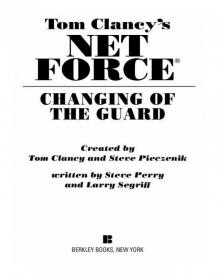 Changing of the Guard
Changing of the Guard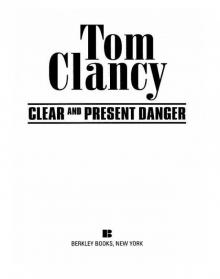 Clear and Present Danger
Clear and Present Danger Hounds of Rome
Hounds of Rome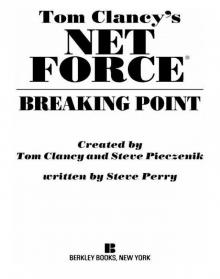 Breaking Point
Breaking Point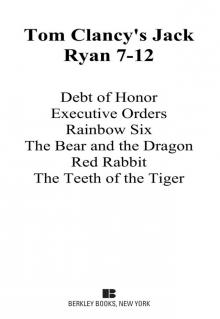 Tom Clancy's Jack Ryan Books 7-12
Tom Clancy's Jack Ryan Books 7-12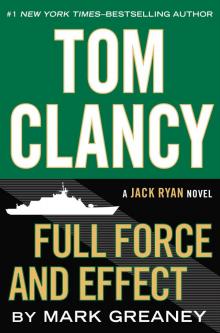 Full Force and Effect
Full Force and Effect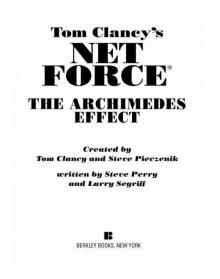 The Archimedes Effect
The Archimedes Effect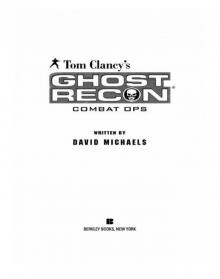 Combat Ops
Combat Ops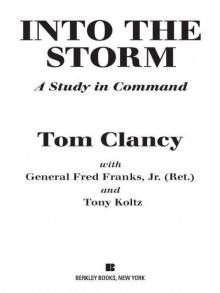 Into the Storm: On the Ground in Iraq
Into the Storm: On the Ground in Iraq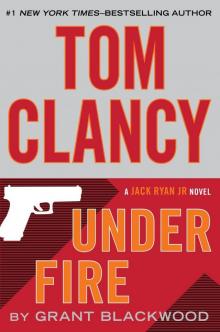 Under Fire
Under Fire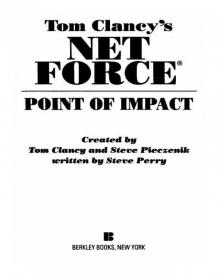 Point of Impact
Point of Impact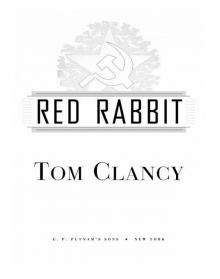 Red Rabbit
Red Rabbit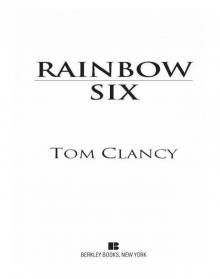 Rainbow Six
Rainbow Six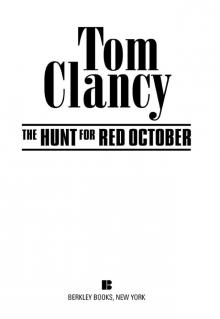 The Hunt for Red October
The Hunt for Red October The Teeth of the Tiger
The Teeth of the Tiger Conviction (2009)
Conviction (2009)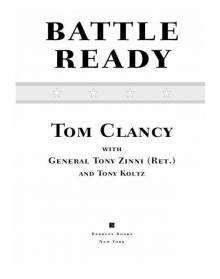 Battle Ready
Battle Ready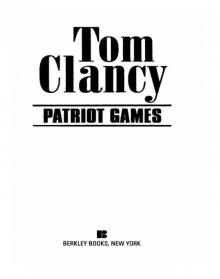 Patriot Games
Patriot Games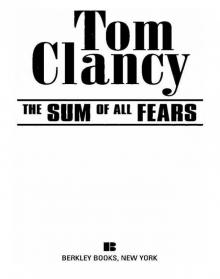 The Sum of All Fears
The Sum of All Fears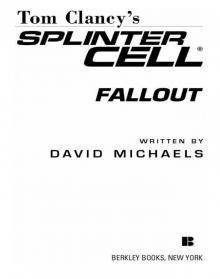 Fallout (2007)
Fallout (2007)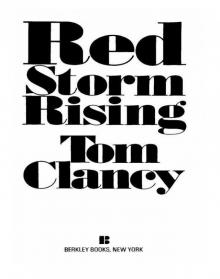 Red Storm Rising
Red Storm Rising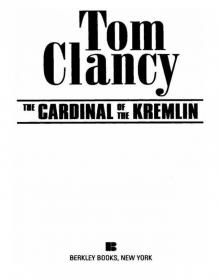 The Cardinal of the Kremlin
The Cardinal of the Kremlin Executive Orders
Executive Orders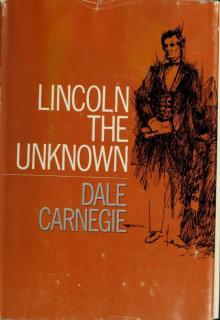 Lincoln, the unknown
Lincoln, the unknown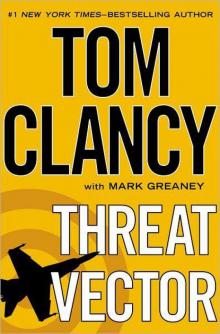 Threat Vector
Threat Vector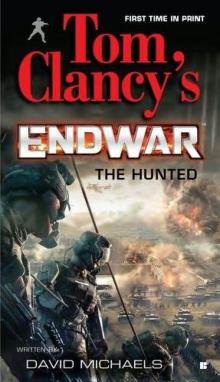 The Hunted
The Hunted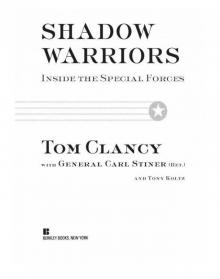 Shadow Warriors: Inside the Special Forces
Shadow Warriors: Inside the Special Forces End Game
End Game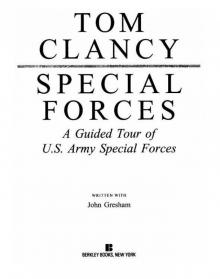 Special Forces: A Guided Tour of U.S. Army Special Forces
Special Forces: A Guided Tour of U.S. Army Special Forces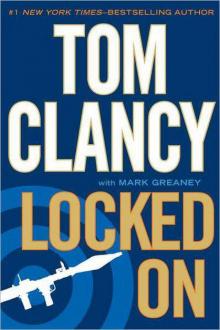 Locked On
Locked On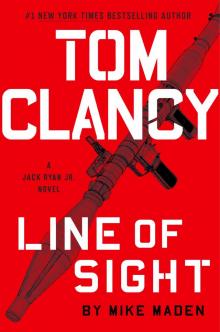 Line of Sight
Line of Sight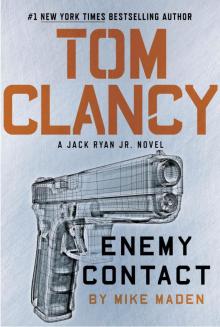 Tom Clancy Enemy Contact - Mike Maden
Tom Clancy Enemy Contact - Mike Maden Fighter Wing: A Guided Tour of an Air Force Combat Wing
Fighter Wing: A Guided Tour of an Air Force Combat Wing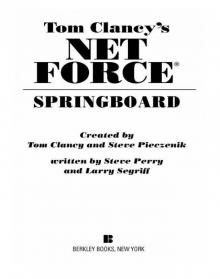 Springboard
Springboard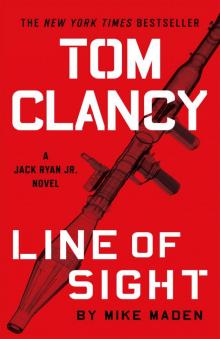 Line of Sight - Mike Maden
Line of Sight - Mike Maden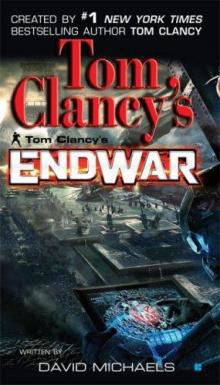 EndWar
EndWar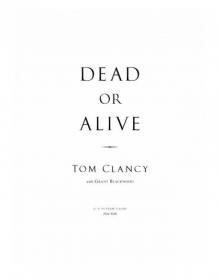 Dead or Alive
Dead or Alive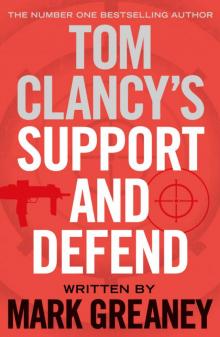 Tom Clancy Support and Defend
Tom Clancy Support and Defend Checkmate
Checkmate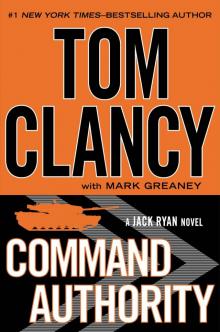 Command Authority
Command Authority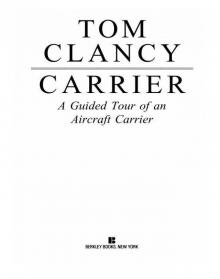 Carrier: A Guided Tour of an Aircraft Carrier
Carrier: A Guided Tour of an Aircraft Carrier Blacklist Aftermath
Blacklist Aftermath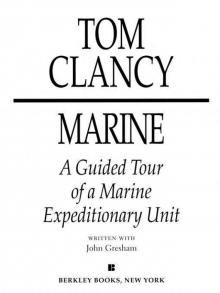 Marine: A Guided Tour of a Marine Expeditionary Unit
Marine: A Guided Tour of a Marine Expeditionary Unit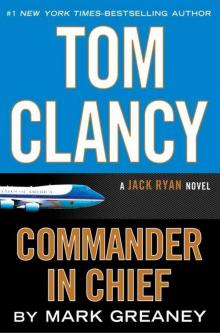 Commander-In-Chief
Commander-In-Chief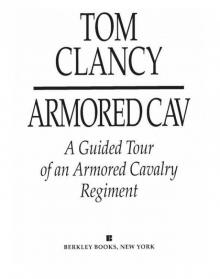 Armored Cav: A Guided Tour of an Armored Cavalry Regiment
Armored Cav: A Guided Tour of an Armored Cavalry Regiment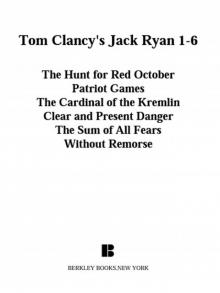 Tom Clancy's Jack Ryan Books 1-6
Tom Clancy's Jack Ryan Books 1-6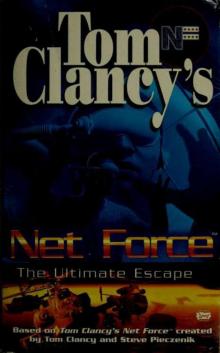 The Ultimate Escape
The Ultimate Escape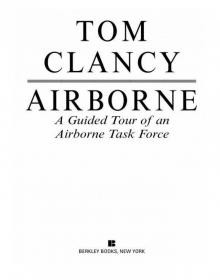 Airborne: A Guided Tour of an Airborne Task Force
Airborne: A Guided Tour of an Airborne Task Force Debt of Honor
Debt of Honor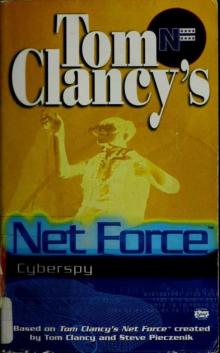 Cyberspy
Cyberspy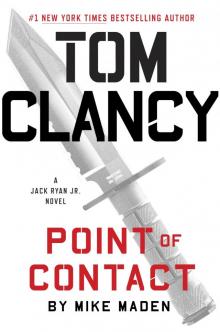 Point of Contact
Point of Contact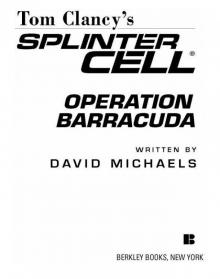 Operation Barracuda (2005)
Operation Barracuda (2005)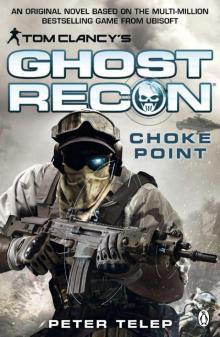 Choke Point
Choke Point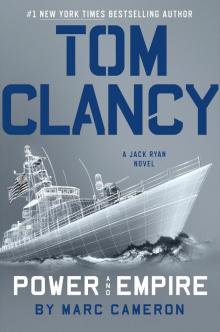 Power and Empire
Power and Empire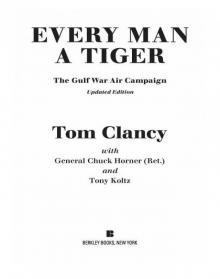 Every Man a Tiger: The Gulf War Air Campaign
Every Man a Tiger: The Gulf War Air Campaign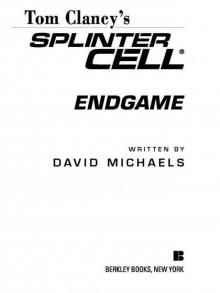 Endgame (1998)
Endgame (1998)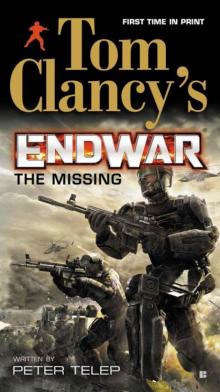 EndWar: The Missing
EndWar: The Missing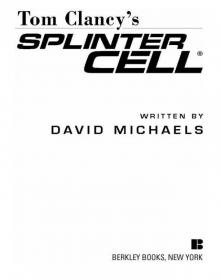 Splinter Cell (2004)
Splinter Cell (2004)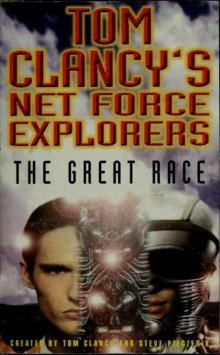 The Great Race
The Great Race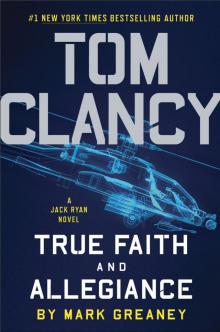 True Faith and Allegiance
True Faith and Allegiance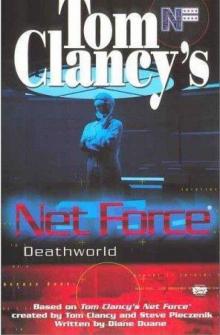 Deathworld
Deathworld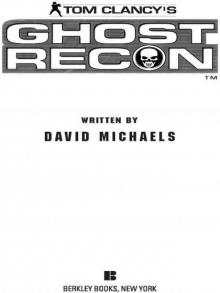 Ghost Recon (2008)
Ghost Recon (2008)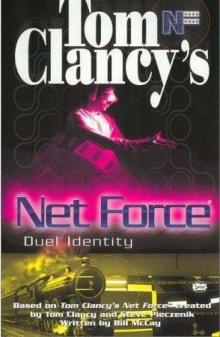 Duel Identity
Duel Identity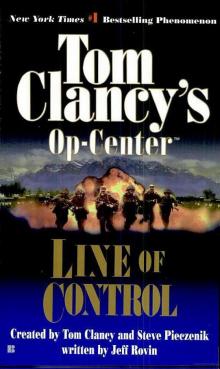 Line of Control o-8
Line of Control o-8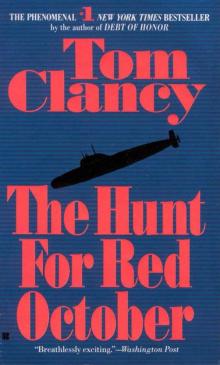 The Hunt for Red October jr-3
The Hunt for Red October jr-3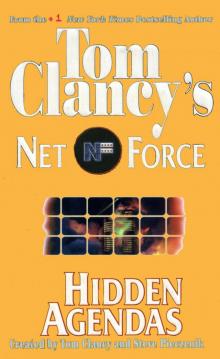 Hidden Agendas nf-2
Hidden Agendas nf-2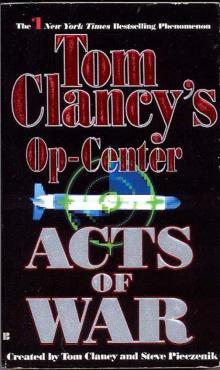 Acts of War oc-4
Acts of War oc-4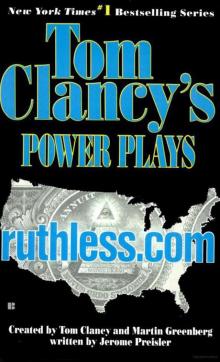 Ruthless.Com pp-2
Ruthless.Com pp-2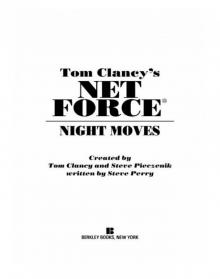 Night Moves
Night Moves The Hounds of Rome - Mystery of a Fugitive Priest
The Hounds of Rome - Mystery of a Fugitive Priest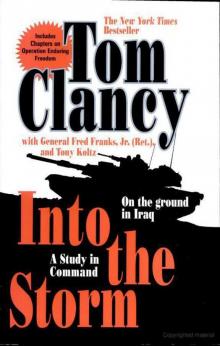 Into the Storm: On the Ground in Iraq sic-1
Into the Storm: On the Ground in Iraq sic-1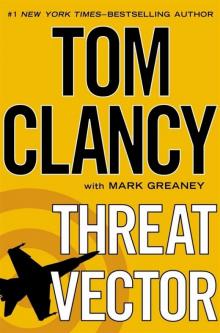 Threat Vector jrj-4
Threat Vector jrj-4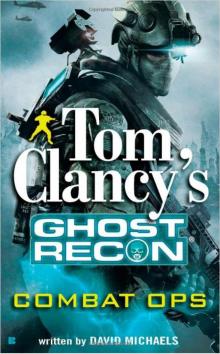 Combat Ops gr-2
Combat Ops gr-2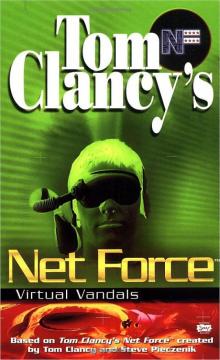 Virtual Vandals nfe-1
Virtual Vandals nfe-1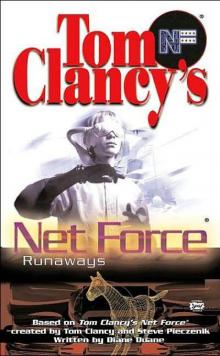 Runaways nfe-16
Runaways nfe-16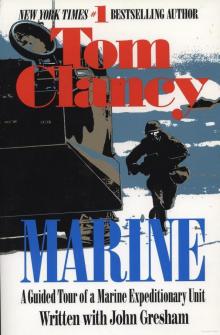 Marine: A Guided Tour of a Marine Expeditionary Unit tcml-4
Marine: A Guided Tour of a Marine Expeditionary Unit tcml-4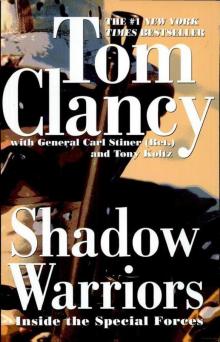 Shadow Warriors: Inside the Special Forces sic-3
Shadow Warriors: Inside the Special Forces sic-3 Jack Ryan Books 1-6
Jack Ryan Books 1-6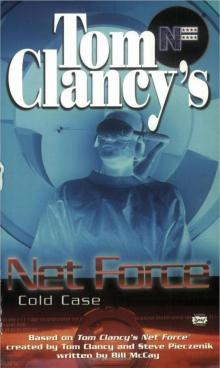 Cold Case nfe-15
Cold Case nfe-15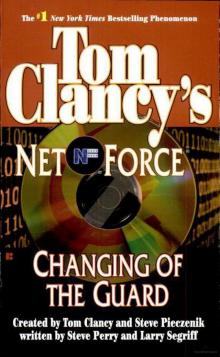 Changing of the Guard nf-8
Changing of the Guard nf-8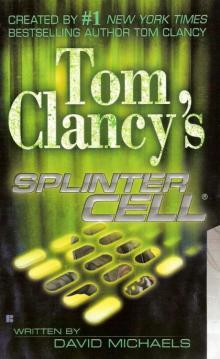 Splinter Cell sc-1
Splinter Cell sc-1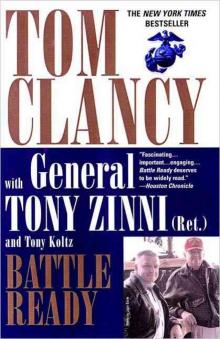 Battle Ready sic-4
Battle Ready sic-4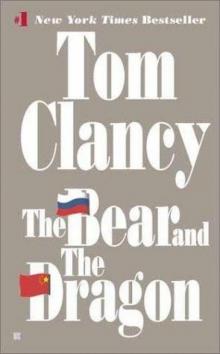 The Bear and the Dragon jrao-11
The Bear and the Dragon jrao-11 Fighter Wing: A Guided Tour of an Air Force Combat Wing tcml-3
Fighter Wing: A Guided Tour of an Air Force Combat Wing tcml-3 Patriot Games jr-1
Patriot Games jr-1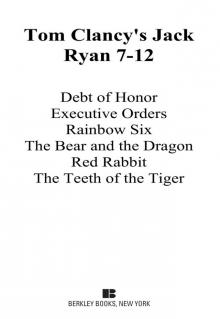 Jack Ryan Books 7-12
Jack Ryan Books 7-12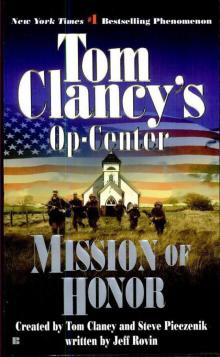 Mission of Honor o-9
Mission of Honor o-9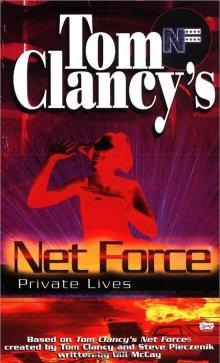 Private Lives nfe-9
Private Lives nfe-9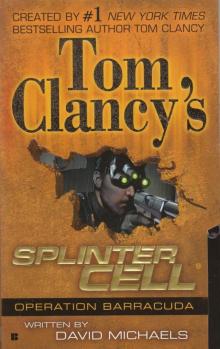 Operation Barracuda sc-2
Operation Barracuda sc-2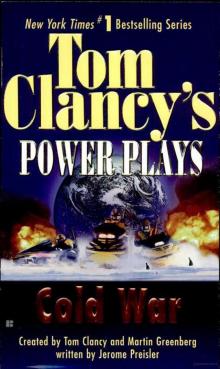 Cold War pp-5
Cold War pp-5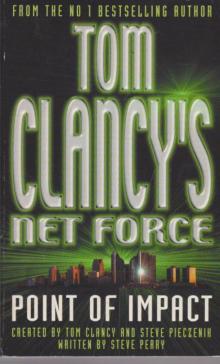 Point of Impact nf-5
Point of Impact nf-5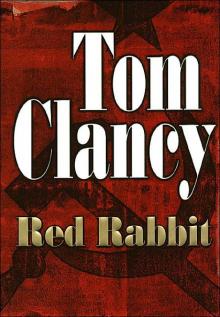 Red Rabbit jr-9
Red Rabbit jr-9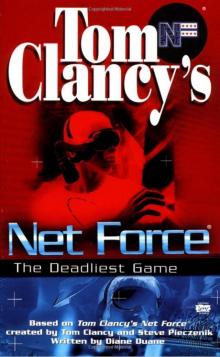 The Deadliest Game nfe-2
The Deadliest Game nfe-2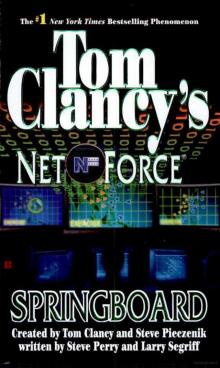 Springboard nf-9
Springboard nf-9 Safe House nfe-10
Safe House nfe-10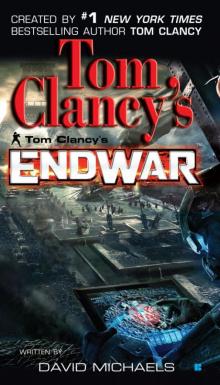 EndWar e-1
EndWar e-1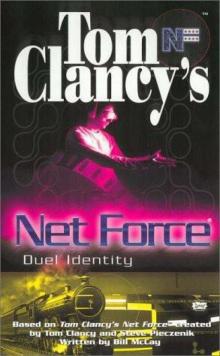 Duel Identity nfe-12
Duel Identity nfe-12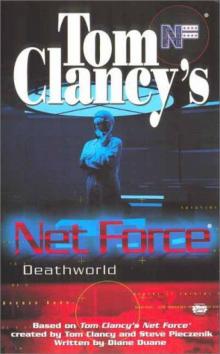 Deathworld nfe-13
Deathworld nfe-13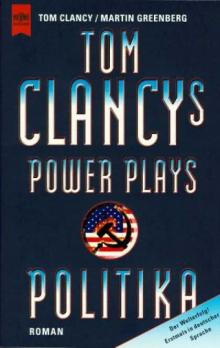 Politika pp-1
Politika pp-1 Rainbow Six jr-9
Rainbow Six jr-9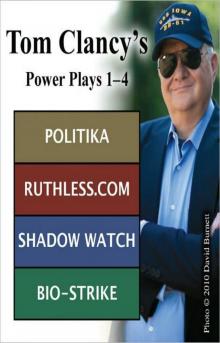 Tom Clancy's Power Plays 1 - 4
Tom Clancy's Power Plays 1 - 4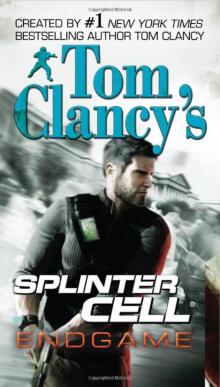 Endgame sc-6
Endgame sc-6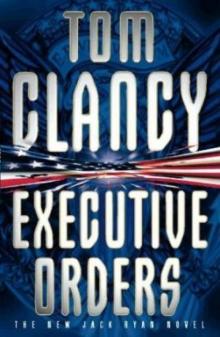 Executive Orders jr-7
Executive Orders jr-7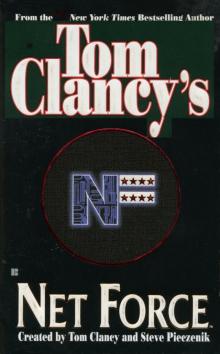 Net Force nf-1
Net Force nf-1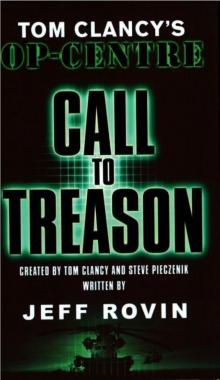 Call to Treason o-11
Call to Treason o-11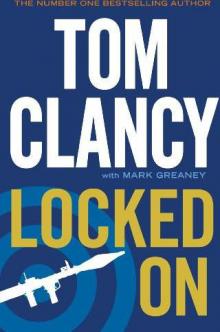 Locked On jrj-3
Locked On jrj-3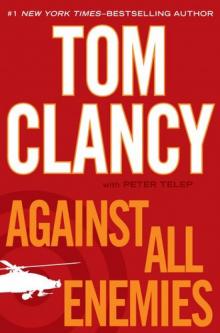 Against All Enemies
Against All Enemies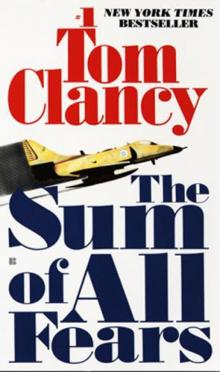 The Sum of All Fears jr-7
The Sum of All Fears jr-7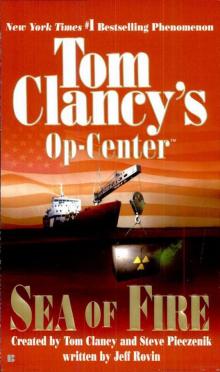 Sea of Fire o-10
Sea of Fire o-10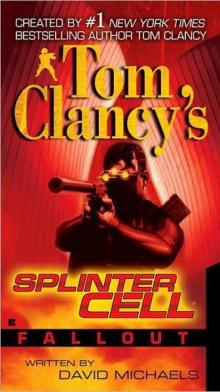 Fallout sc-4
Fallout sc-4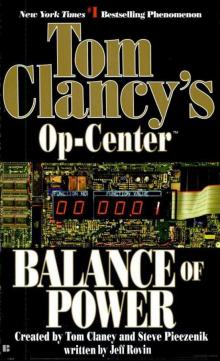 Balance of Power o-5
Balance of Power o-5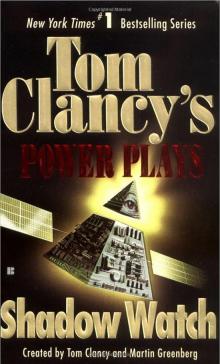 Shadow Watch pp-3
Shadow Watch pp-3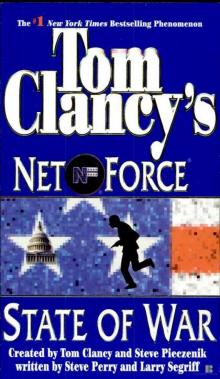 State of War nf-7
State of War nf-7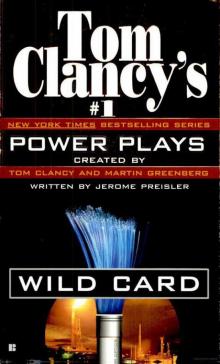 Wild Card pp-8
Wild Card pp-8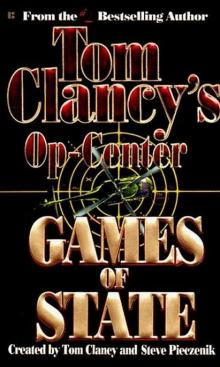 Games of State o-3
Games of State o-3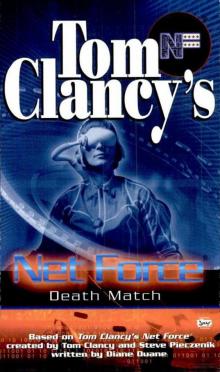 Death Match nfe-18
Death Match nfe-18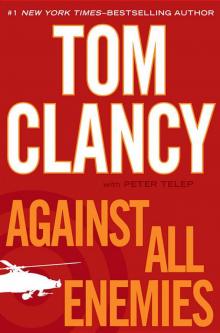 Against All Enemies mm-1
Against All Enemies mm-1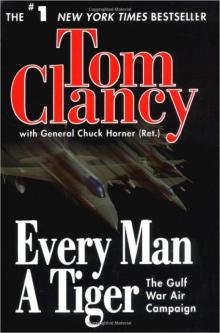 Every Man a Tiger: The Gulf War Air Campaign sic-2
Every Man a Tiger: The Gulf War Air Campaign sic-2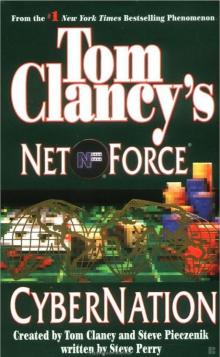 Cybernation nf-6
Cybernation nf-6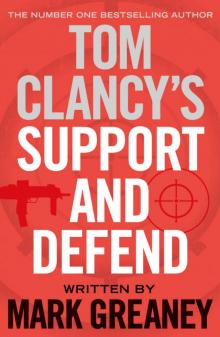 Support and Defend
Support and Defend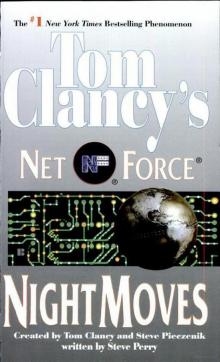 Night Moves nf-3
Night Moves nf-3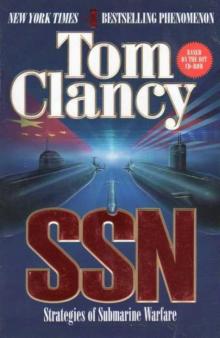 SSN
SSN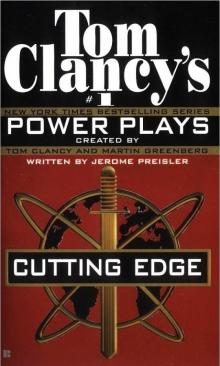 Cutting Edge pp-6
Cutting Edge pp-6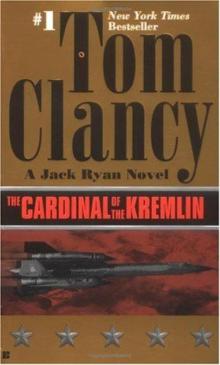 The Cardinal of the Kremlin jrao-5
The Cardinal of the Kremlin jrao-5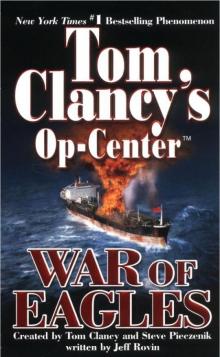 War of Eagles o-12
War of Eagles o-12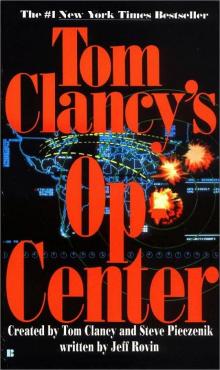 Op-Center o-1
Op-Center o-1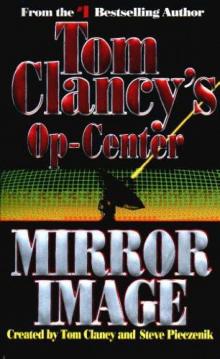 Mirror Image o-2
Mirror Image o-2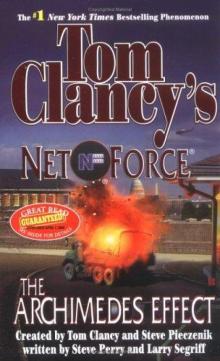 The Archimedes Effect nf-10
The Archimedes Effect nf-10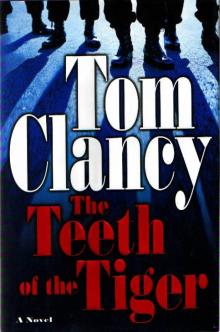 Teeth of the Tiger jrj-1
Teeth of the Tiger jrj-1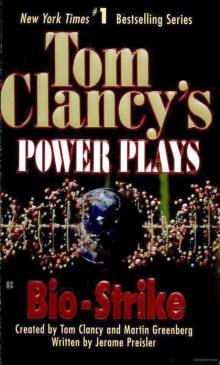 Bio-Strike pp-4
Bio-Strike pp-4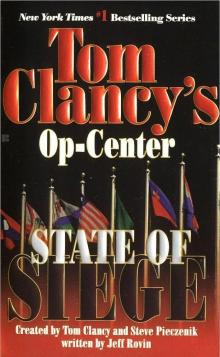 State of Siege o-6
State of Siege o-6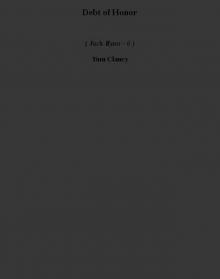 Debt of Honor jr-6
Debt of Honor jr-6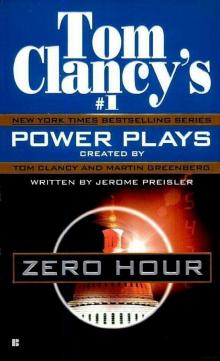 Zero Hour pp-7
Zero Hour pp-7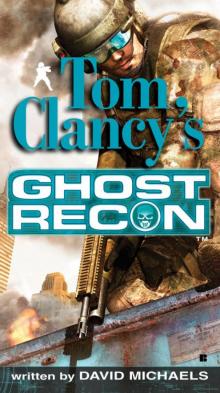 Ghost Recon gr-1
Ghost Recon gr-1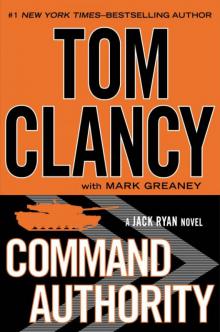 Command Authority jr-10
Command Authority jr-10 Tom Clancy's Power Plays 5 - 8
Tom Clancy's Power Plays 5 - 8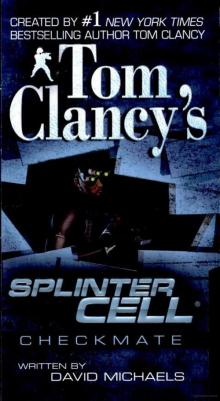 Checkmate sc-3
Checkmate sc-3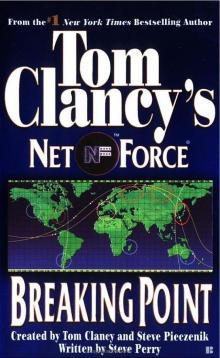 Breaking Point nf-4
Breaking Point nf-4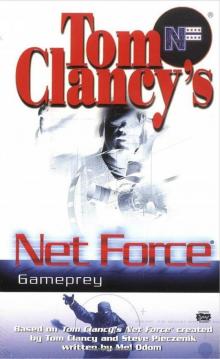 Gameprey nfe-11
Gameprey nfe-11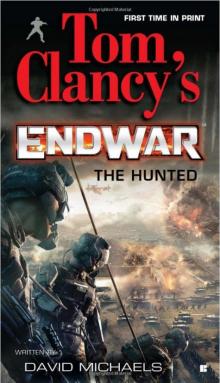 The Hunted e-2
The Hunted e-2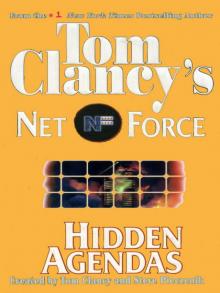 Hidden Agendas
Hidden Agendas Divide and Conquer o-7
Divide and Conquer o-7